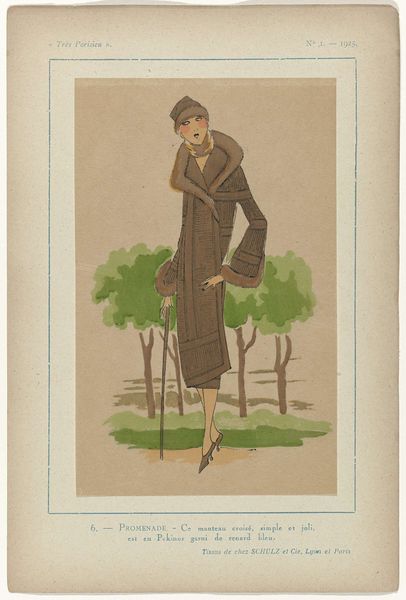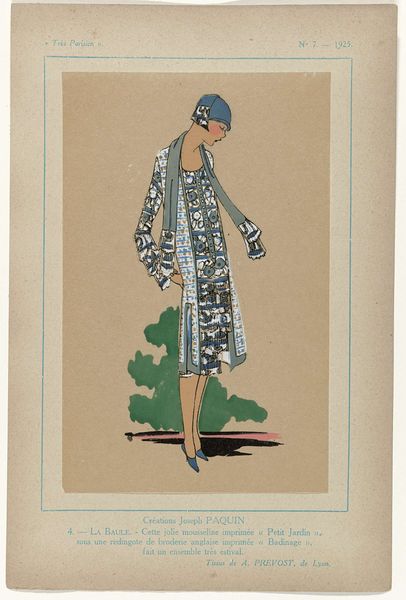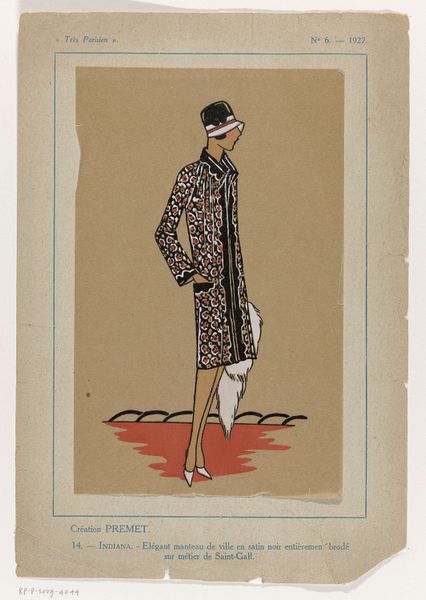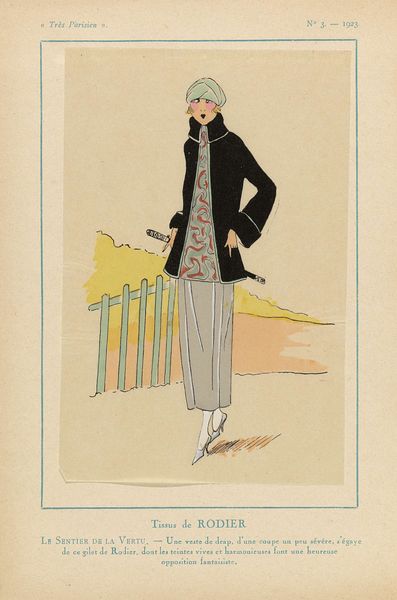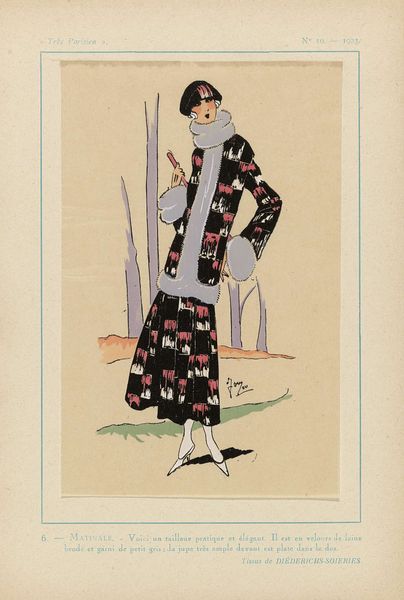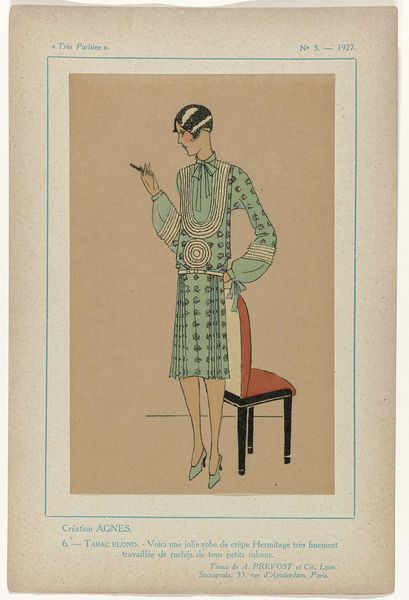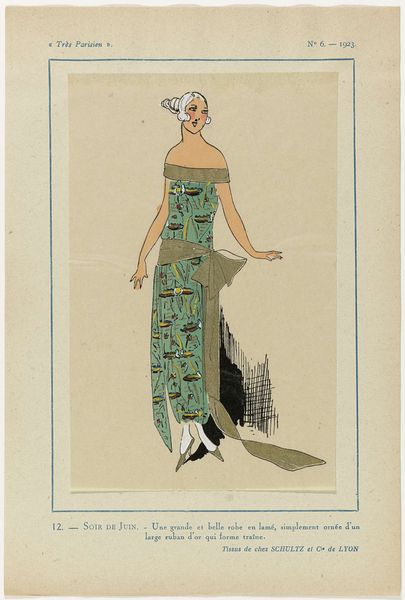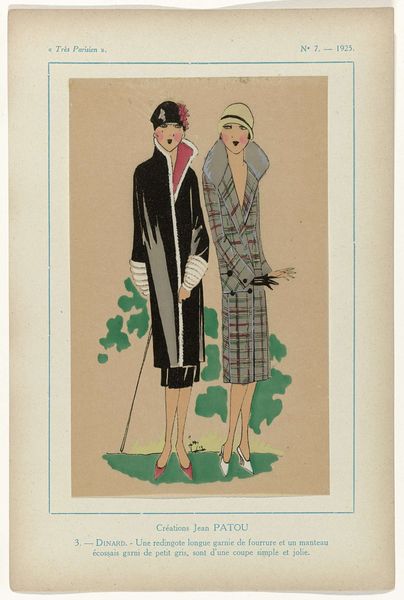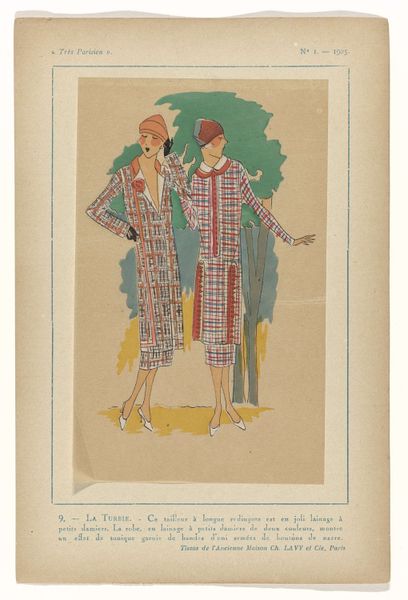
print, watercolor
#
portrait
#
art-deco
# print
#
watercolor
#
watercolour illustration
Dimensions: height 195 mm, width 120 mm, mm
Copyright: Rijks Museum: Open Domain
Curator: Here we have a print titled "Trés Parisien, 1925, No. 1, Pl. 17.-SOLITAIRE.", by G-P. Joumard, currently held at the Rijksmuseum. It appears to be a watercolour illustration of high fashion, indicative of the Art Deco movement. Editor: My initial response is one of quiet elegance. The colour palette, with its muted browns and pops of yellow and green, evokes a sense of understated luxury and perhaps even a melancholic solitude, mirroring the title, "Solitaire." Curator: Absolutely. Solitude as a carefully curated pose, perhaps? I am drawn to how the linear patterns, in the woman's coat and hat, contribute to an impression of refined self-containment. Her gaze, directed away, furthers this detachment. The verticality inherent in the design, even with the slight bend in the figure and walking stick, emphasises this uprightness of identity. Editor: Precisely, this woman, presented with such an air of sophistication, likely represents the ideal of the modern, independent woman in Paris during the 1920s. One cannot ignore, though, the restricted colour story, especially against the light hues of the architectural backdrop: it all contributes to a very calculated visibility. What statements are being made here about Parisian identity, specifically for women in a changing society? Curator: I perceive those contrasts also within the psychological sphere. Fashion serves here as an armour, both expressing and concealing an inner world. The "self" is layered, represented through clothing and pose as much as expression. How do we separate individual expression from the commercial or industrial production of trends? The designer’s name is printed beneath this woman! Editor: It raises essential questions, indeed. Is this woman truly ‘solitaire’, or is she embodying a collective yearning for freedom and expression following the war, meticulously reproduced through mass media and made available to the public? There is something compelling about its status as a manufactured expression, almost cynical. Curator: Intriguing. I see that now, perhaps as a bridge or mediation between self and performance, being fashionable can also be isolating. Editor: It invites us to consider how visibility and invisibility operate for women, especially regarding fashion's role in either enabling or limiting their social identities in the rapidly changing social environment. I like how much this one figure opens up.
Comments
No comments
Be the first to comment and join the conversation on the ultimate creative platform.
